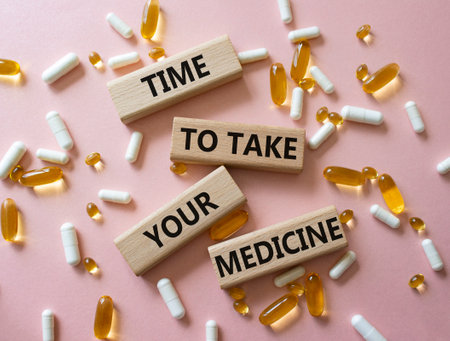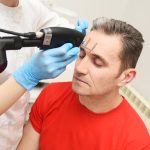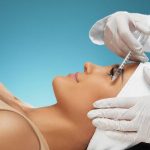1. Understanding Post-Treatment Pain and Discomfort
After undergoing an aesthetic procedure, its completely normal to experience some level of pain or discomfort. This is part of your bodys natural healing process. Understanding why this happens can help ease your worries and prepare you for a smoother recovery.
Why Does Pain Happen After Aesthetic Treatments?
Most cosmetic treatments—whether surgical like liposuction or non-surgical like laser therapy—involve some form of tissue disruption. When the skin, muscles, or fat layers are affected, your body responds with inflammation. This response can cause swelling, tenderness, bruising, and soreness in the treated area.
Common Causes of Post-Treatment Discomfort
| Treatment Type | Typical Discomfort | Duration |
|---|---|---|
| Botox/Dermal Fillers | Mild swelling, bruising at injection sites | 1-3 days |
| Laser Resurfacing | Burning sensation, redness, peeling | 5-10 days |
| Chemical Peels | Tightness, stinging, flaking skin | 3-7 days |
| Liposuction | Soreness, swelling, numbness | 1-4 weeks |
| Microneedling | Sensitivity, redness, mild swelling | 2-4 days |
Factors That Influence Your Recovery Experience
Your post-treatment experience can vary depending on several personal and procedural factors. These include:
- Your Pain Tolerance: Everyone feels pain differently. What’s mildly uncomfortable for one person may feel intense for another.
- The Area Treated: More sensitive areas like the face or neck may feel more tender after treatment compared to other parts of the body.
- The Type and Intensity of Treatment: Deeper or more aggressive procedures usually result in more noticeable discomfort.
- Your Overall Health: If you’re healthy and follow aftercare instructions closely, your body is likely to recover faster and with less pain.
- Your Providers Technique: Skilled practitioners use techniques that minimize trauma to the tissue, which can reduce post-procedure discomfort.
When to Be Concerned About Pain Levels
Mild discomfort is expected—but if you experience sharp pain that gets worse over time, or symptoms like high fever or pus at the treatment site, contact your provider immediately. These could be signs of infection or complications that need medical attention.
2. Immediate Aftercare: First 24 Hours
The first 24 hours after a cosmetic treatment are crucial for managing pain, reducing swelling, and preventing irritation. Taking the right steps early on can make a big difference in how you feel and how quickly you recover.
Cold Compresses
Applying a cold compress is one of the most effective ways to reduce swelling and soothe discomfort. Wrap an ice pack or a bag of frozen peas in a clean cloth and gently apply it to the treated area for 10–15 minutes at a time. Avoid placing ice directly on the skin to prevent frostbite or irritation.
Rest Is Key
Your body needs time to heal, so take it easy for the rest of the day after your treatment. Avoid strenuous activities, bending over, or lifting heavy objects. Giving yourself permission to rest helps reduce inflammation and supports the healing process.
Stay Hydrated
Drinking plenty of water helps flush out toxins and keeps your skin hydrated from the inside out. Aim for at least 8 glasses (about 64 ounces) of water throughout the day. Avoid alcohol and caffeine, as they can dehydrate your body and slow down recovery.
Avoid Touching or Pressuring the Treated Area
It’s important not to rub, press, or massage the area that was treated. Doing so may cause irritation or interfere with how your treatment settles, especially in procedures like dermal fillers or Botox.
Aftercare Essentials at a Glance
| Action | Why It Matters |
|---|---|
| Cold Compress (10–15 min) | Reduces swelling and numbs pain |
| Plenty of Rest | Allows body to begin healing naturally |
| Hydration (8+ glasses/day) | Keeps skin healthy and flushes toxins |
| No Touching or Rubbing | Prevents irritation and displacement of treatment |
| Avoid Alcohol & Caffeine | Minimizes dehydration and speeds up recovery |
Quick Tips
- Use extra pillows to elevate your head while sleeping—this can help minimize facial swelling.
- If prescribed medication, take it exactly as directed by your provider.
- Check with your practitioner before applying any skincare products post-treatment.
The steps you take during this initial period can set the tone for your entire healing process. Being gentle with yourself during the first 24 hours helps ensure better results and a more comfortable recovery experience.
![]()
3. Effective Pain Management Methods
After undergoing a cosmetic treatment, its normal to experience some level of discomfort or pain. Fortunately, there are several effective methods to manage these symptoms and help you feel more comfortable during your recovery process. From over-the-counter medications to natural remedies, heres how you can ease post-treatment discomfort.
Over-the-Counter (OTC) Medications
OTC pain relievers are often the first line of defense against post-procedure discomfort. These medications are widely available at pharmacies and grocery stores across the U.S., and they can be very effective when used as directed.
| Medication | Type | Common Brand Names | Purpose |
|---|---|---|---|
| Acetaminophen | Pain Reliever | Tylenol | Reduces mild to moderate pain without affecting swelling |
| Ibuprofen | Pain Reliever/Anti-inflammatory | Advil, Motrin | Helps with both pain and swelling |
| Naproxen | Pain Reliever/Anti-inflammatory | Aleve | Longer-lasting relief for pain and inflammation |
Topical Treatments
If youre dealing with localized discomfort, topical solutions may be a great option. These products are applied directly to the skin and can provide targeted relief.
Creams and Gels:
- Lidocaine Cream: A numbing agent that helps reduce surface-level pain or itching.
- Arnica Gel: A natural anti-inflammatory that can help reduce bruising and swelling.
- Aloe Vera Gel: Soothes irritated or sensitive skin, especially after laser treatments or chemical peels.
Natural Remedies
If you prefer a more holistic approach, there are several natural options that many people in the U.S. use to manage post-treatment discomfort.
Common Natural Remedies:
- Cold Compress: Applying a cold pack wrapped in a cloth can help reduce swelling and numb minor pain.
- Tumeric Tea or Supplements: Known for its anti-inflammatory properties; check with your provider before using supplements.
- Epsom Salt Baths: Helps relax muscles and soothe soreness, especially after body treatments.
- Hydration & Rest: Drinking plenty of water and getting adequate rest supports the healing process naturally.
Important Note:
No matter which method you choose, always follow your provider’s post-care instructions. If your pain worsens or doesnt improve, contact your healthcare professional promptly.
4. When to Seek Professional Help
After any cosmetic or medical treatment, it’s normal to experience some level of pain or discomfort. However, its important to know the difference between typical healing symptoms and signs that something might be wrong. Acting quickly can help prevent complications and ensure your recovery stays on track.
Recognizing Warning Signs
Here are some key signs that may indicate a complication and require you to contact your provider or seek medical attention:
| Symptom | What It Could Mean | When to Call a Doctor |
|---|---|---|
| Excessive swelling | Mild swelling is common, but if it continues to grow, becomes hard, or doesn’t improve after a few days, it could signal infection or fluid buildup. | If swelling worsens after 48 hours or is accompanied by redness or heat. |
| Severe or sharp pain | A dull ache is expected, but intense pain that doesn’t respond to over-the-counter meds could be a sign of nerve involvement or other issues. | If pain increases significantly instead of improving daily. |
| Fever or chills | This may indicate an infection in the treated area. | If your temperature is above 100.4°F (38°C). |
| Pus or unusual discharge | A clear fluid is normal in minor wounds, but yellow, green, or foul-smelling discharge suggests infection. | If you notice any colored discharge from the treated area. |
| Unusual skin reactions | This includes rashes, hives, or extreme redness not discussed during your consultation. | If these reactions spread or worsen quickly. |
Trust Your Gut
You know your body better than anyone else. If something feels off—even if its not listed here—it’s always okay to check in with your provider. Don’t wait for things to get worse before reaching out for help. Its better to ask and be safe than ignore a potential issue.
Emergency Situations
If you experience difficulty breathing, chest pain, sudden dizziness, or loss of consciousness following a treatment, call 911 immediately. These are medical emergencies and should be addressed right away.
5. Long-Term Comfort and Healing
After your aesthetic treatment, its important to focus not only on short-term recovery but also on long-term comfort and healing. Taking the right steps can help reduce inflammation, prevent complications, and maintain the results of your procedure for as long as possible. Here are some best practices that can make a big difference in how you feel and how well your body heals.
Stay Consistent with Aftercare Instructions
Your provider will give you specific aftercare instructions based on your treatment. Following these guidelines consistently is key to minimizing discomfort and promoting proper healing. This might include using cold compresses, avoiding certain products, or skipping intense workouts for a few days.
Reduce Inflammation Naturally
Inflammation is a normal part of the healing process, but too much can cause discomfort and slow recovery. You can naturally reduce inflammation by:
- Staying hydrated throughout the day
- Eating anti-inflammatory foods like berries, leafy greens, and fatty fish
- Avoiding alcohol and processed foods
- Using over-the-counter anti-inflammatory medications if approved by your provider
Support Your Body with Rest and Nutrition
Your body needs time and nutrients to heal properly. Make sure youre getting enough rest and fueling your body with healing-supportive foods. Heres a quick guide to what helps most:
| Category | Examples | Why It Helps |
|---|---|---|
| Protein-rich foods | Chicken, tofu, eggs, legumes | Helps rebuild tissue and promotes healing |
| Vitamin C sources | Citrus fruits, bell peppers, strawberries | Boosts collagen production and immune support |
| Healthy fats | Avocados, nuts, olive oil | Reduces inflammation and supports skin health |
| Hydration | Water, herbal teas, electrolyte drinks | Keeps tissues hydrated and flushes out toxins |
Avoid Triggers That Could Delay Healing
Certain activities or habits can interfere with the healing process or worsen discomfort. Try to avoid:
- Excessive sun exposure (always use sunscreen!)
- Smoking or vaping – these slow down skin regeneration
- Picking at scabs or peeling skin post-treatment
- Sweating excessively from saunas or hot yoga sessions too soon after treatment
Create a Follow-Up Plan with Your Provider
Your aesthetic journey doesn’t end after the treatment itself. Schedule follow-up appointments to ensure everything is healing properly and to address any concerns early. Your provider may also recommend maintenance treatments or skincare routines tailored to your needs.
Pro Tip:
If something doesn’t feel right during recovery—like increased swelling or pain—don’t wait it out. Contact your provider right away for peace of mind and proper care.
By taking a proactive approach to your post-treatment routine, you’ll not only feel more comfortable but also enjoy longer-lasting results from your aesthetic investment.


